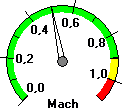Agli inizi degli anni 60, durante uno dei pių importanti raduni acrobatici
Il Lockhead Aerobatic Trophy , Ladislav Bezāk, capitano della squadra cecoslovacca stupė tutti gli osservatori presentando una manovra che sembrava sfidare tutte le leggi di aerodinamica e di gravitā.
Il Lomcovak.
Anche se in America fu subito ribattezzato "headache" e in molti paesi europei quali Francia, Svizzera , fu conosciuto per molti anni come l'homme slovaque, in realtā il suo nome deriva da una parola Polacca che significa "Ubriaco"
(nota di colore)
La manovra fu subito ripresa dai piloti russi che iniziarono a sperimentarla sugli Yak 18.
Dopo diversi problemi strutturali riscontrati sul castello motore di vari velivoli, dall'alto arrivō l'ordine di non eseguire tale manovra, pena l'immediato cambio di residenza presso qualche lussuoso e confortevole gulag siberiano.
Contrariamente a quanto si possa pensare, il lomcovak non č una vite rovescia o una manovra incontrollata e casuale.
Sopratutto non č una singola manovra, piuttosto un'insieme di manovre che hanno un ben preciso inizio e fine.
Il segreto del Lomcovak č che il controllo dell'aeroplano č soggetto a quattro forze aerodinamiche anziché le tradizionali tre.
La quarta č rappresentata dal precessionamento giroscopico del disco dell'elica, controllato tramite la manetta del Gas.
Esistono cinque versioni base di Lomcovak; ciascuna delle quali possiede diverse varianti.
In ogni caso tutte sono eseguite sotto "G" negativo.
Il Lockhead Aerobatic Trophy , Ladislav Bezāk, capitano della squadra cecoslovacca stupė tutti gli osservatori presentando una manovra che sembrava sfidare tutte le leggi di aerodinamica e di gravitā.
Il Lomcovak.
Anche se in America fu subito ribattezzato "headache" e in molti paesi europei quali Francia, Svizzera , fu conosciuto per molti anni come l'homme slovaque, in realtā il suo nome deriva da una parola Polacca che significa "Ubriaco"
(nota di colore)
La manovra fu subito ripresa dai piloti russi che iniziarono a sperimentarla sugli Yak 18.
Dopo diversi problemi strutturali riscontrati sul castello motore di vari velivoli, dall'alto arrivō l'ordine di non eseguire tale manovra, pena l'immediato cambio di residenza presso qualche lussuoso e confortevole gulag siberiano.
Contrariamente a quanto si possa pensare, il lomcovak non č una vite rovescia o una manovra incontrollata e casuale.
Sopratutto non č una singola manovra, piuttosto un'insieme di manovre che hanno un ben preciso inizio e fine.
Il segreto del Lomcovak č che il controllo dell'aeroplano č soggetto a quattro forze aerodinamiche anziché le tradizionali tre.
La quarta č rappresentata dal precessionamento giroscopico del disco dell'elica, controllato tramite la manetta del Gas.
Esistono cinque versioni base di Lomcovak; ciascuna delle quali possiede diverse varianti.
In ogni caso tutte sono eseguite sotto "G" negativo.









